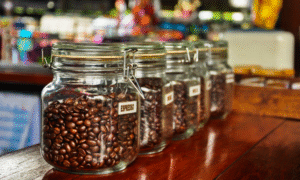
Best Practices For Storing Roasted Coffee
Best Practices For Storing Roasted Coffee When you choose to purchase high-quality gourmet coffee, you definitely want to make sure

If you’ve ever wondered how baristas pull that rich, flavorful shot of espresso, you’re not alone. Crafting the perfect espresso shot takes practice, but with the proper technique and a few essential pointers, you can create café-quality espresso at home. Let’s break down each step to help you brew espresso with a thick crema, balanced flavor, and that signature espresso aroma.

The foundation of a good espresso shot starts with fresh, high-quality coffee beans. It’s best to buy whole beans that were roasted within the last two weeks. Freshness directly impacts the flavor and crema of your espresso, so avoid pre-ground coffee whenever possible. If you’re serious about making espresso at home, invest in a quality grinder to grind the beans right before brewing. Freshly ground beans deliver better flavor and consistency than pre-ground, and they’re well worth the extra step.

Grind size is one of the most critical factors in espresso. If it’s too coarse, the water will pass through too quickly, leading to an under-extracted shot that tastes weak and sour. If it’s too fine, water can struggle to pass through, resulting in an over-extracted shot that tastes bitter and burnt.
A good rule of thumb is to grind your coffee to a consistency similar to fine sand. The exact grind size can vary depending on your machine, but generally, espresso requires a fine, consistent grind. You may need to experiment to find the ideal grind setting that suits your equipment.

Dosing and tamping are essential to ensure your shot is extracted evenly. For a double shot of espresso, start with 18–20 grams of ground coffee. Measure this carefully, as too much or too little can throw off your shot.
After you’ve dosed, it’s time to tamp. Tamping compresses the coffee grounds into a flat, even puck. Apply around 30 lbs of pressure with a tamper for a consistent surface. A flat, even puck ensures the water passes through the grounds uniformly, extracting the maximum flavor without any weak or over-extracted spots.
Pro Tip: Some people use a scale to confirm the exact weight of the grounds, which is a great way to maintain consistency.

Espresso extraction is sensitive to temperature and pressure. Set your espresso machine to brew at approximately 200°F (93°C). This temperature is ideal for extracting the complex flavors without scorching or under-developing them. Higher-end machines often have a PID controller to ensure a consistent temperature, but if yours doesn’t, try to avoid sudden temperature changes during brewing.
As for pressure, espresso is traditionally brewed at 9 bars. This is the optimal amount for balancing the flavors, creating a well-rounded, smooth shot without overpowering bitterness. Too high or low pressure can alter the taste of your espresso, so try to stick close to this standard.

Timing is everything in espresso. For a double shot (approximately 2 oz), aim for an extraction time of 18-22 seconds. If your shot pulls too fast (under 18 seconds), you may need to adjust the grind finer or increase the dose. A shot that takes too long (over 22 seconds) may benefit from a coarser grind or a lighter dose.
The goal here is to balance flavor. When extraction time is correct, you should achieve a well-rounded shot with a balanced acidity and sweetness. Timing might seem daunting at first, but once you nail it, you’ll notice a significant improvement in taste.

The perfect espresso shot will have a rich layer of crema—a golden, velvety foam on top of the espresso. Crema indicates that your coffee was fresh and the extraction was well-executed. When evaluating, look for a balance of flavors: not too bitter or sour, but a harmonious blend with a full body and a smooth finish.
If your shot lacks crema or tastes off, use it as an opportunity to tweak your technique. Small adjustments to your grind size, dose, or extraction time can significantly affect the outcome.
Aim for around 200°F (93°C). This temperature helps extract flavors without burning or under-extracting your coffee.
Start with fresh beans, grind to the right consistency, dose correctly, tamp evenly, and control the temperature and pressure for a balanced flavor.
Crema depends on bean freshness and the quality of the extraction. Use fresh beans, ensure a fine grind, and aim for the correct extraction time for the best crema.
Pulling the perfect espresso shot at home requires practice, but it’s an incredibly rewarding skill to master. By following these steps—choosing fresh beans, dialing in your grind size, dosing and tamping correctly, controlling temperature and pressure, and perfecting timing—you’ll be well on your way to making café-quality espresso every time. Remember, the key is consistency. With patience and practice, you’ll soon be enjoying beautifully balanced, flavorful espresso shots you’ve crafted with your hands.
So grab your beans and tamper, and start experimenting with your espresso. Your mornings will thank you!

Best Practices For Storing Roasted Coffee When you choose to purchase high-quality gourmet coffee, you definitely want to make sure

Direct Trade Coffee is an exciting and important concept that describes the relationship that coffee roasters have with coffee farmers

At Poverty Bay Coffee Co., we named our different roasts after Northwest water landmarks. With all of Puget Sound’s ins